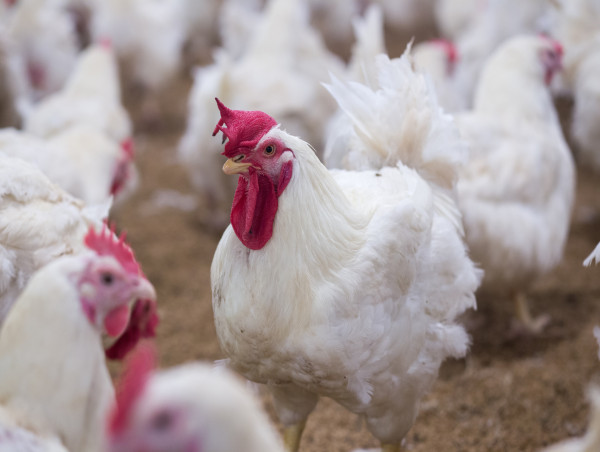Dwayne Walker, founder of Walker Poultry Trailers, notes that production increases place added pressure on transportation resources and biological outcomes. “When production scales up, every segment of the supply chain feels the impact—particularly live-haul operations,” said Walker. “Trailer designs that address bird comfort, loading efficiency, and biosecurity contribute to better outcomes at a time when throughput and condition matter most.”
Production Surge Places Spotlight on Live-Haul Systems
USDA forecasts for 2025 point to a rise in total broiler output, with production volumes reaching new highs in key poultry states. Increased volumes create demand for transportation methods tuned to handle larger flocks without sacrificing bird health or line efficiency at processing plants.
Enhanced trailer designs offer benefits across the board: reduced bruising, improved air exchange, faster loading, and reduced labor time. Each detail—flooring, ventilation, ramp angle—plays a role in handling efficiency and bird condition.
Ventilation Systems Aligned with Seasonal Peaks
Rising production often coincides with seasonal heat challenges in states like Alabama, Texas, and Mississippi. Heat stress poses direct threats to live-haul operations—impacting bird health and processing performance.
Advanced trailers feature longitudinal airflow systems and adjustable venting designed to reduce moisture buildup and heat load. Vent layout supports steady air circulation through each deck. Consistent airflow contributes to improved animal welfare and maintains processing yields.
Ramp Deployment for Higher Throughput
More birds moving through transport systems requires loading ramps engineered for smoother, faster cycles. Traditional steep ramps add time and risk damage to flocks. Hydraulic ramps with gentle, adjustable slopes reduce strain on birds and allow catch crews to operate more swiftly.
Improved ramp mechanics reduce ground contact time and movement-related injuries—especially valuable during high-volume operations. A few seconds saved per load can translate to hours saved each week.
Flooring Designed for Live Production Conditions
Flooring failure during loading or transit creates logistical slowdowns and animal welfare concerns. Poultry-focused trailers use textured, non-slip surfaces with drainage control. High-density ribbed flooring retains grip even when wet, and perforations allow runoff—ensuring foot stability across the route.
With production ramped up, cleaning cycles accelerate too. Flooring needs to hold up under repeated acid or disinfectant cleaning without deteriorating. Durability and traction remain constant priorities during peak demand.
Interior Features that Support Consistency and Safety
As production volumes rise, trailer interiors must maintain consistent environments and ease of cleaning. Non-metal contact edges, sealed joints, and bird-safe finishes reduce fingernail damage and avoid harboring contaminants. Deck dividers tailored to lift per catch crew layout prevent bird bunching and improve unloading speed.
Uniform lighting minimizes chaos during nighttime survival operations. Panels installed at deck entries create ambient conditions that reduce bird surprise and maintain direction—especially critical when production shifts to 3 a.m. harvest schedules.
Regional Climate and Regulatory Context
In regions like Georgia and North Carolina, USDA growth overlaps with hot, humid summers. Heat stress has a direct impact on live weight and bird quality. Season-adapted trailer design addresses fluctuating temperatures and speeds turnaround.
States such as Arkansas and Texas are increasingly focused on welfare audit points, including ramp design, internal surfaces, and flooring safety. Live-haul operations sensitive to audit performance benefit from proactive redesign that aligns with emerging compliance expectations.
Operational and Economic Benefits
Motion- and condition-sensitive trailer features support faster turn times and fewer bird losses—priority metrics in tight-margin production environments. Lower line condemnations, fewer employee injuries during loading, and reduced cleaning downtime directly reduce costs and improve logistics coordination.
Data from field operations shows gains in load speed and consistent bird condition attach directly to trailer elements like ventilation, ramp hydraulics, and non-slip floors. Trailer designs optimized for live-haul deliver measurable boosts to haul cycle efficiency.
Collaboration with Producers for Custom Design
Trailer technology often evolves through feedback from grower groups, integrators, and processors in high-output states like Mississippi and Alabama. Customization requests—adjustable ramp slope, internal airflow fine-tuning, floor material upgrades—are part of design cycle.
Collaboration ensures trailers match the needs of fast-paced operations. Clinics at processing plants designate deck width, catch crew spacing, and lighting arrangement. Integrators and fleets share field data—from bruising rates to load times—helping identify top performers for next-gen trailer designs.
After-Sales Support and Training
Technical assistance and driver/ramp operator training form part of the live-haul solution. Timing of airflow vents, ramp deployment angle, and deck-level sequencing may vary by location. On-site demonstrations in top-producing states focus on climate adaptation, slope impact, and loading ergonomics.
Parts availability for high-wear components—ramps, floor sheets, vent hardware—supports 24/7 production schedules. Reduced downtime and faster component replacement mean trailers stay in service throughout peak cycles.
The Takeaway
USDA’s production increase signals a busy season ahead for poultry producers. Live-haul trailers built to prioritize bird welfare and operational efficiency will support smoother harvest windows, quicker turnaround, and compliance alignment.
Dwayne Walker emphasizes that trailer function determines operational rhythm. “Delivering birds safely and on time, day after day, depends on systems designed for the conditions,” he explained. Accessible designs tailored to industry needs play a major role in the production pipeline.
Morgan Thomas
Rhino Digital, LLC
+1 504-875-5036
email us here
Visit us on social media:
Facebook
Legal Disclaimer:
EIN Presswire provides this news content "as is" without warranty of any kind. We do not accept any responsibility or liability for the accuracy, content, images, videos, licenses, completeness, legality, or reliability of the information contained in this article. If you have any complaints or copyright issues related to this article, kindly contact the author above.
![]()


